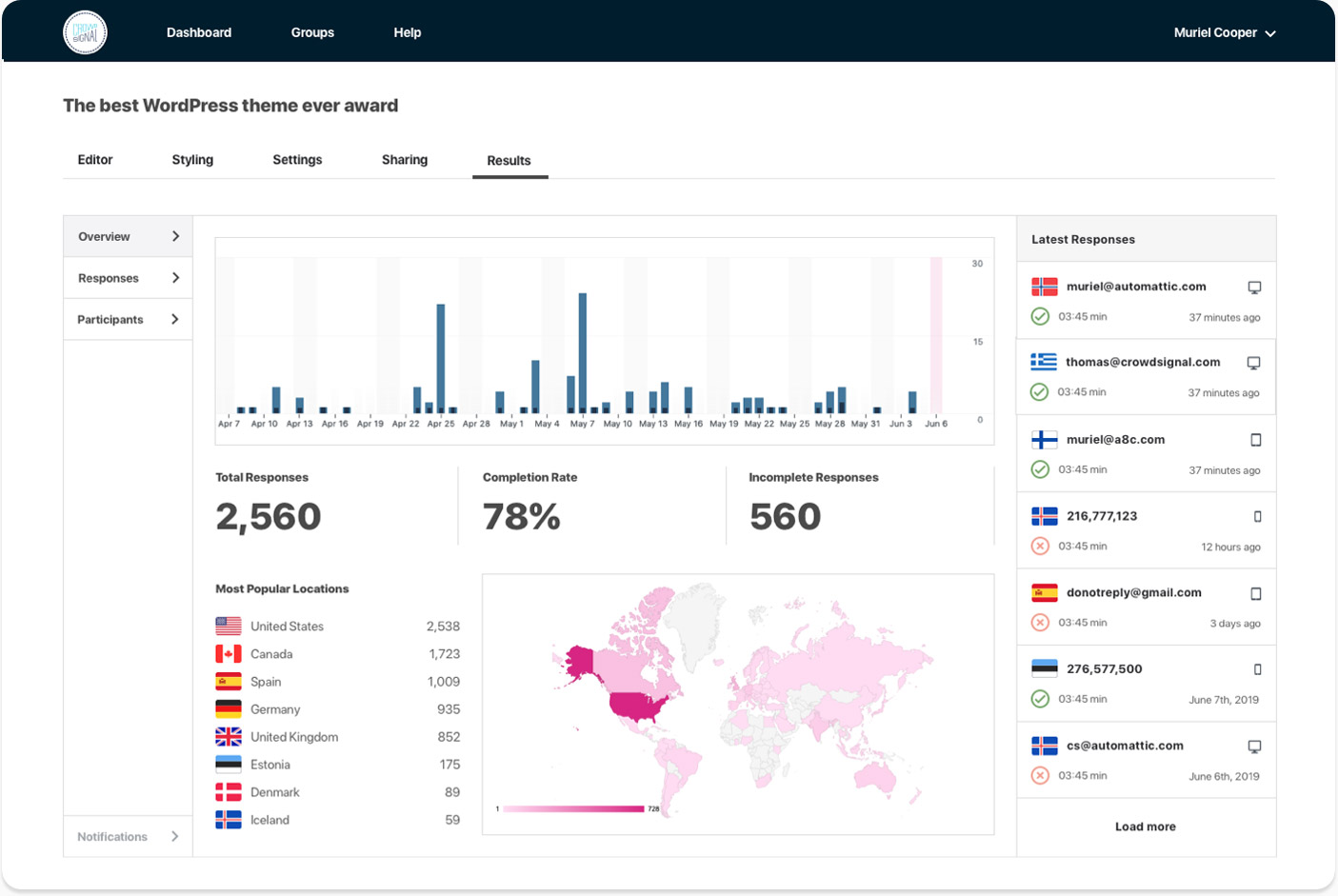
A new block: Measure your Net Promoter Score
Do our customers love what we do? Are they satisfied with our service? What do they say about us? Is this month better than last?
Especially monitoring this progress over time is pretty hard. Most of us don’t have the time or resources to do research projects every month.
There is though one simple process and metric that can help us to get a sense for all the questions above. The Net Promoter Score.
It certainly doesn’t answer all the questions you’ll have, it’s just one question after all, but it is a great compass to tell you how people are experiencing your product, how loyal they are, and if there’s potential for growth.
We have built a Gutenberg block for you that makes it easier than ever to track your Net Promoter Score on WordPress.
What is the Net Promoter Score
The Net Promoter Score (NPS) has been a widely used business metric since the first time it received public attention in a Harvard Business Review article in 2003 by F. F. Reichheld. It is based on a single rating scale question:
“How likely is it that you would recommend this product to your friends or colleagues? ”
Customers can answer the question on a scale of 0 to 10.

The strength of the NPS approach is that it substitutes a single question for a complex customer satisfaction survey. A single question is a lot easier for your customers to answer and for your team to analyze. You can collect in a very simple way timely data that your team is able to act on immediately.
The NPS question is often combined with an open follow-up question. Your customer has the chance to add some context and more detailed feedback to their rating and give your team some “hands-on” feedback.
What does it measure?
The Net Promoter Score tries to measure customer loyalty and therefore also becomes a good indicator for potential growth. Please keep in mind that this metric is a just proxy for how well you are doing. It is just one question after all!
What is a good net promoter score? The absolute value of your score, like the first score you are measuring, is actually not important. Your score development over time is the important part! How does that score change over time? Are your customers happier with you this month? Or is there a down-trend?
How is the NPS calculated?
The actual formula for NPS is easy:
The responses to your rating scale question are segmented into three groups:

Customers that give you a 6 or below are Detractors, a score of 7 or 8 are Passives, and a 9 or 10 are Promoters.
In order to calculate your score, we subtract the percentage of detractors from the percentage of promoters. Therefore your score is a number that ranges from -100 to 100.

You might wonder now, what is a good score? As mentioned already above, it does not matter so much what your current score is, but much more how your score evolves over time.
There are some websites that try to benchmark the score for industries, but we are not sure how much this helps. There are many factors that impact the NPS score, a big impact factor is the context for where and when you measure it. As there is no way to know how other companies measured their score, it can be hard to compare scores to each other.
Analyze and track your progress

We provide an analytics dashboard with our block that automatically calculates the Net Promoter Score for you in real-time and allows you to monitor your score over time.
You can also filter your results by country and spot trends in particular regions.
How does the block work?

WordPress.com hosted sites can use the NPS block immediately. Just go into your editor and search for the “Measure NPS” block, or type “/nps”. If you have a self-hosted site, you only need to install the Crowdsignal-Forms plugin.
The moment you add the block, you are basically done. The design of the block is based on your site’s theme. You can still customize the styling of the block, or edit the questions, but that might not even be necessary.
To get the most out of your NPS data, it is important to show the question only to users that are already familiar with your service or product. You can configure the block to only show to repeat visitors. It’s more likely you will get feedback from someone who knows what they are talking about, and you can make sure new users are not interrupted during their first visit to your site.
After you publish the block go to the results page of the block and monitor your results.
By the way, did you know you also can get email notifications or a ping in your Slack channel any time you get an NPS rating? Just click on the little “connect” button on your results page.



